Shaders. Hold-outs. Shiners. Lodestones. Marked cards. Loaded dice. Around the turn of the 20th century, these were the tools of a charlatan…a scoundrel…a cardsharp…a low-down dirty cheat. Becoming a crooked gambler could be a highly lucrative, though possibly rather short-lived, career. The question is, how exactly did one acquire the requisite gaffs to become a professional hustler? Well, as it turns out, there was a rather thriving industry surrounding such things, as can be seen in the clipping below (taken from the January 28, 1922 National Police Gazette).
The more astute among you may have noticed that one specific ad was highlighted above. That particular advertisement was placed by the Hill Brothers, a mail order company based in Salida, Colorado. It was the discovery of one of their catalogs in our archives which first piqued my interest in this subject.
Donning the guise of “Magical Supplies,” and purporting to be a means of “exposing crooked gambling methods” is a catalog chock-full of the tools of a rather nefarious trade. Despite numerous disclaimers scattered throughout its pages, these items are clearly designed to perform only one trick…magically transferring the contents of another’s wallet into your own.
You may wonder whether selling such goods was actually legal—I know I did. Turns out, there was apparently some dispute about that at the time. In earlier ads (which I was sadly unable to acquire), the brothers apparently brashly trumpeted (or at least strongly implied) how much money could be made at “sporting parlors” with a rigged deck, a little sleight of hand and a certain level of disregard for personal safety. This style of advertising brought them some unwanted attention, culminating in the April 1912 arrest of Myron E. and Lawrence A. Hill on charges of using the mail to defraud.
The Salida Mail had two further articles regarding the arrest, though the focus appeared to primarily settle on Myron. There’s an odd quirk throughout the articles, in which the brother’s initials are reported inconsistently, with Lawrence identified as “H.R. Hill” and “L.R. Hill” (when in fact, census records identify him as Lawrence A. Hill), and Myron is alternately referred to as “M.E. Hill” and “E.M. Hill.” Swing and a miss, there, Salida Mail…
Sadly (and more than a little puzzlingly), this is apparently the last the Mail had to say about the subject. There are no further references to the trial, nor any mention of the outcome. This does not, however, mean we are completely in the dark. We know that whatever backlash there may have been, it was fairly limited in scope. The brothers were still selling the same goods a decade later, with only a shift in marketing and the inclusion of numerous caveats peppered throughout their catalogs. It’s also clear that if there was any period of incarceration, it was negligible. This is evidenced by the fact that July 13, 1915, saw the return of M.E. Hill to its pages…to announce his purchase of a house.
So, even if the old adage “crime doesn’t pay” holds true (which is debatable), it appears that providing the tools for crime paid quite handsomely.
[Special thanks to Katie Rudolph for her invaluable assistance in researching this project.]

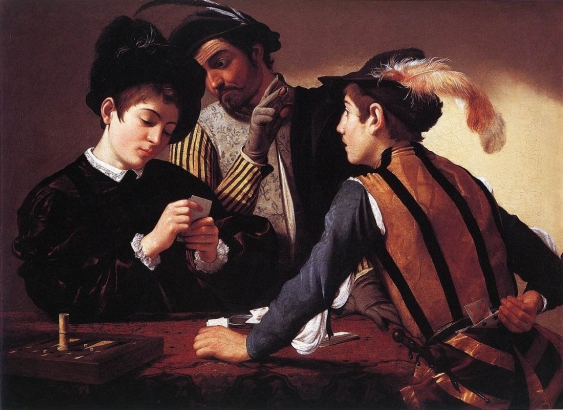

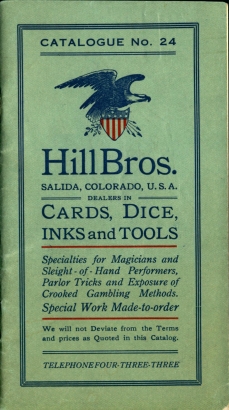
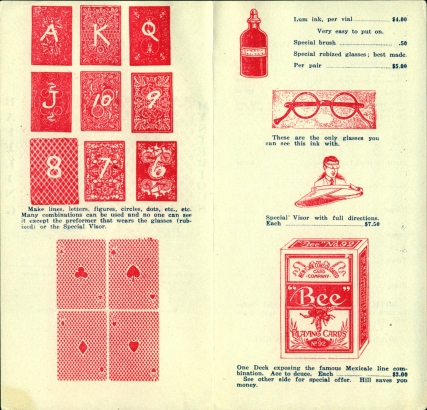

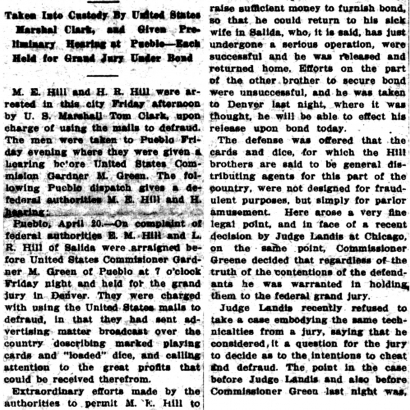
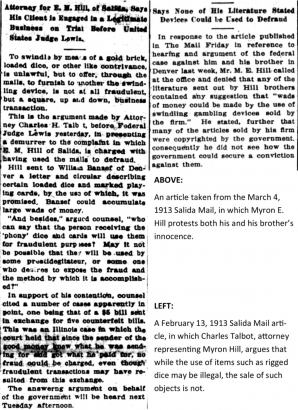
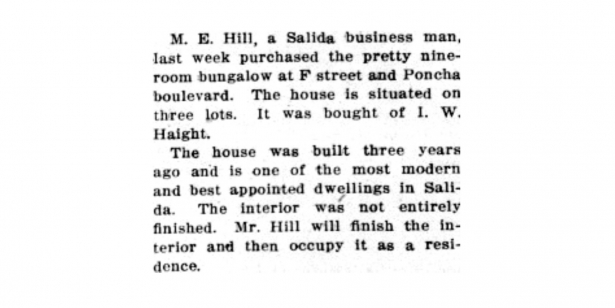
Comments
Chris, you might want to
Chris, you might want to check out Alias Soapy Smith: The Life and Death of a Scoundrel in the Denver library. It is the story of Denver's most famous card sharp confidence man of the latter nineteenth century.
I'm somewhat familiar with Mr
I'm somewhat familiar with Mr. Smith, and his three-card-monte inspired soap scam which earned him his moniker. Always interested in learning more about such scoundrels, though. Thanks for the recommendation!
Yes, Soapy was the famous
Yes, Soapy was the famous King of the Kon Artists before the turn of the century. Sadly, his life ended in 1898 in Alaska.
Killed in a pretty
Killed in a pretty spectacular shootout, if I recall correctly.
Yes he was
Yes he was
There is a Magician by the
There is a Magician by the name of Nicholas J Johnson from Melbourne Australia who has written several books on the art and artifice of gamblers and cheats, including the games they play.
Not familiar with Johnson's
Not familiar with Johnson's works. I did, however, read a fascinating book called Sharps and Flats by John Nevil Maskelyne, who was himself a crooked gambler in the early 20th century. Went into great detail about the tools and tactics of the trade. It's part of the Internet Archive project, so it's available free online, if you're interested. (Actually, I suppose it's available free online whether you're interested or not.)
Add new comment